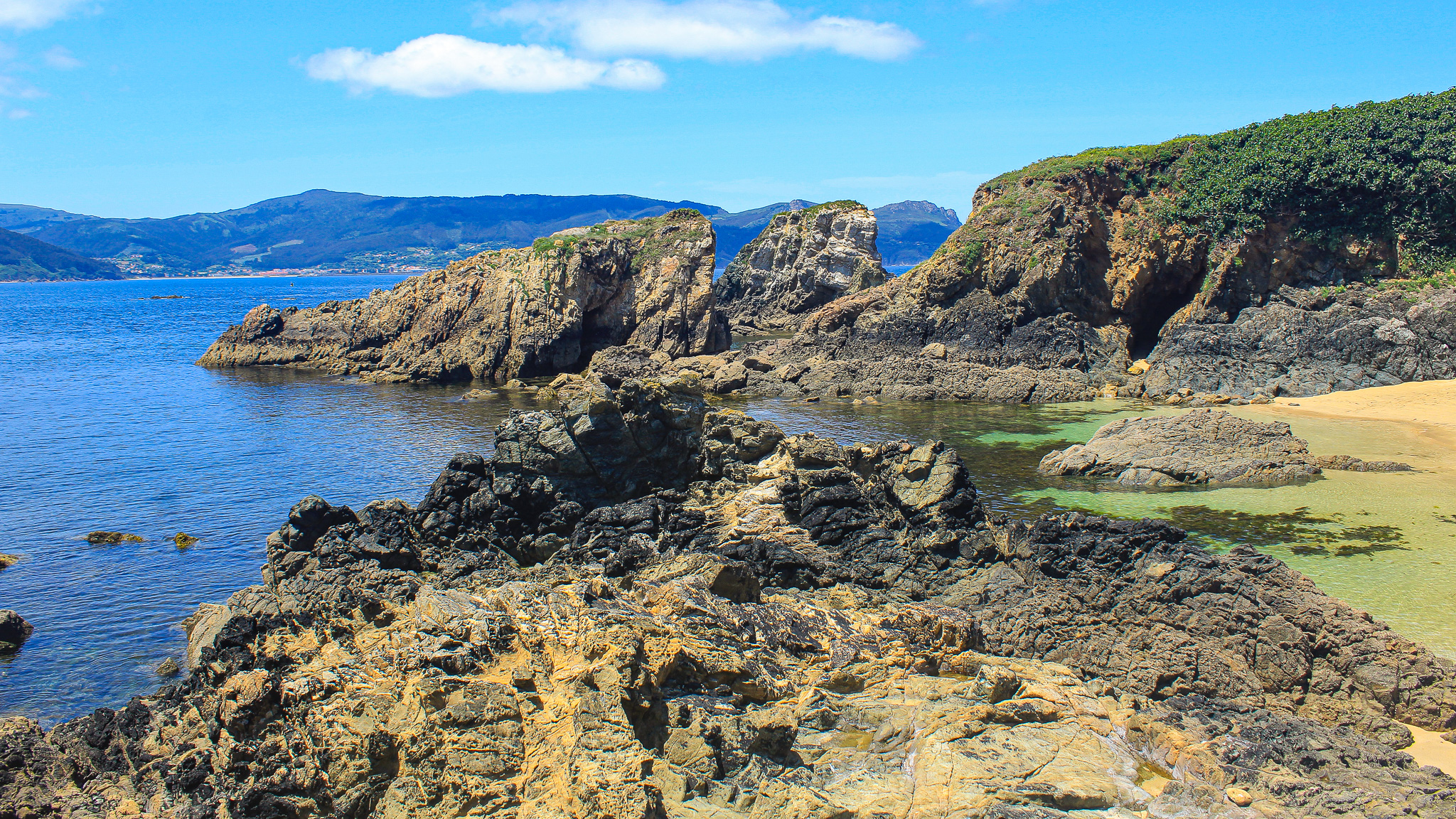Spanish local road numbering is at first bewildering until you work out that the prefix letter(s) denote the sector the road is travelling through. This means a single road can change names several times on a long cross-country journey.
We left Santiago de Compostela on Sunday morning on the A9 toll road and headed northwest along the Galician coast following the scenic AC862 (A Coruna) cum provincial carretera LU852 (we never did work out the place name).
Our guidebook promised a diverse landscape of fertile valleys, wooded hills, steep cliffs and fantastic rocky beaches. Tucked initially inland, the route twisted and wound upwards through one road villages, passing many truck stops and a remarkable number of petrol stations. We commented on this, then realised why.

The main industry of the hillside was clearly logging. Being Sunday, the depots were quiet but there were several heavily loaded long trailered lorries stacked high with pine tree trunks making their sedate process upwards ahead of us, whilst in the opposite lane, empty long trailered lorries sped maniacally down the hillsides presumably to clock off.
Impressively engineered viaducts carried the road, and neighbouring local routes, across the wide and green valleys.
Also notable were the numbers of hydrangea bushes. Cultivated both in gardens but also along the roadsides, the bushes of pompom flowers in bright and faded blues seemed to be a talisman of the area. Being blue is an indicator of the acidic content in the soil which has a pH of 5.5 or lower.

Gardens at home tend to have pink pompom flowers which is due to neutral or alkaline soils. Further around the coast we would see both blue, pink and purple pompoms on the same plant, pitting the soil content squarely within the pH 5.5 – 6.5 range.
Oddly, I remembered this from some long-ago Rural Science lesson at school, coupled with Mum’s green fingers at Frothy Cottage!
The road wound down and around the wide stretch of estuary at the Ria de Santa Marta de Ortigueira, a fishing and leisure port. We hoped to stay but on arriving at the parking for autocaravanas, it was confusingly signed as being closed and there was no opportunity of shade.

A quick tour on foot around Ortigueira showed it to be a pretty place of neat white houses clustered port side, with a large central square and bandstand.
Families and friends were massed under the parasols of the square’s cafes for the Sunday routine of tapas and chatter. Small dishes of huge mussels kept arriving from the tiny bar as accompaniments to drinks.
Ordering coffees we were hopeful of a dish for the passers through but were instead presented with two slices of cake. No matter, it was dark, chocolatey and a rush of sugar to propel us around the coast.

We left the sedate town, passing a strikingly gaudy, disused and out of place Discoteca and made the short journey to seaside parking at Porto de Espasante.
Childishly, one of us amused themselves reflecting that some Spanish place names are more easily pronounced in gruff imitation of the actor, Andy Garcia (Garr-THEE-AA): ‘AsTORRgah’, ‘ORTY-GERRah’ and ‘Porto de espaSAN-TAY’ seemed near the mark.
Arriving for the mid afternoon at the pretty beach parking, we were treated to a front row space above the clear, aqueous waters lapping gently at the rocks.

A short stroll along the promenade curving around the sandy beach revealed a series of touchingly hand sketched portraits of, mainly, elderly people.
Simon established these were locals, since departed, and remembered with affection in the community. Understanding this we paused at a sketch of a young, serious looking boy. It was very moving.
At lunchtime the next day we picked up where we had left off on the winding coastal stretch of the now LU852. The road hugged the coastline and crossed the sea twice, at the Ria del Barqueiro and Ria de Viviero. The bridges were spectacular, as were those carrying the rail line alongside.

Again, ruefully, we thought of our beleaguered Sussex coastal roads themselves in sore need of resurfacing and heavily congested with traffic.
It was good to bowl along the smoothly tarmacked and ingeniously elevated, wide carriageways to our destination for a couple of days at the coastal commuter town of San Cibrao.
Or, of course, as Andy would say it, ‘San Thee-BROWW’.








